BAGHDAD - For the second time in four years, troops from a Texas National Guard unit finds themselves in the full time service to their state and nation supporting Operation Iraqi Freedom.
For some Soldiers of 2nd Battalion, 142nd Infantry Regiment, 56th Infantry Brigade Combat Team, deployment to the Middle East bares a close resemblance to home station.
Known as the "High Plains Infantry", the companies that comprise the battalion are primarily found in the high plains area of the panhandle of northwestern Texas. This part of Texas has terrain that is mostly flat with moderate elevation and has high winds and temperatures during the summer; no different than many parts of Iraq.
This time around, they secure and escort convoys of critical supplies, everything from beans and bullets to water and fuel across western Iraq in the famed Anbar province.
"Every single widget we use, from a slice of bread at chow to the fuel that runs our generators is brought in by ground convoy, and Texan Soldiers are the ones protecting it," said Lt. Col. Christopher Link, 56th IBCT operations officer of Mansfield, Texas.
These convoy missions can take several days to complete and when rolling on the road, can stretch for several miles from the lead vehicle to the truck pulling up the rear.
"This mission normally puts about 1,000 miles on each of our trucks," explained acting platoon sergeant, Staff Sgt. Richard Shaver, of Arlington, Texas.
For Shaver, most missions normally last about four or five days, depending on execution times and cooperating weather. That's five days of living out of a backpack, sleeping irregular hours, operating under the starry nights of western Iraq and sleeping in makeshift huts under the blaring desert sun.
Rolling out of the sprawling Victory Base Complex on the western edge of Baghdad, Soldiers escort more than 30 tractor trailer trucks and start heading west in Mine Resistant Ambush Protected Vehicles.
"I like driving the MRAP because civilians [in smaller vehicles] tend to stay clear when they see a 25,000 pound truck coming," said Spc. Timothy Stewart, a vehicle driver from Rock Port, Texas.
The convoy traveled more than 250 miles during the night, often times barely crawling along due to sub-standard road conditions.
Along the way, a vehicle breakdown increases the timeline and prompts Shaver to say, "We might see daylight before we finish tonight boys." Once everyone has pulled into their destination, they refuel all vehicles and prepare for another mission the next day.
After some rest and dinner, many of the Soldiers begin to prepare once again for a mission on the Iraqi roads.
Like any mission, it requires flexibility and capacity. On this night, the Soldiers are put on standby because of unfavorable road status, only to be given a "Go," after many had relaxed and settled in for a nights rest on the camp.
"You absolutely have to be flexible in this mission, said Shaver. "We can go from being stood down and not moving to hitting an [start point] within an hour."
Like the rest of the convoy, the platoon travels in elements: a security element for added safety and to warn fellow Soldiers on the mission, another element escorts the bulk of the semi-trucks with the supplies, and another team acts as maintenance recovery for vehicles that may experience problems ranging from transmission problems to something as innocuous as a simple flat tire.
"We operate in elements. Each element operates semi-independently of each other. Their tasks being completed can make or break a mission," Shaver explained.
Along the route the recovery team got a chance to exercise their skills as a fuel tanker had a tire blowout. The blowout caused the loss of two tires and both had to be replaced before the mission could continue.
On this night however, this would not be the only maintenance issue that these Soldiers would be faced with. A separate trailer had tire issues as well, including the loss of some of the highly important lug nuts used to keep the wheels on and rolling down the supply routes. After some controlled substitution amongst the contracted drivers of the fuel tankers, the mission, once again continued towards the Iraqi capital. There would be, however, one more breakdown.
This final breakdown happened along the supply route to Baghdad near Fallujah. This incident would test the patience of the recovery crew.
Un-able to self-recover, Shaver's Soldiers wait hours on the outskirts of Fallujah in searing heat while maintaining security, protecting the vital fuel in the tanker and wait for addition recovery assets.
After the additional assets arrive, the convoy moves as they finally continue towards Victory Base Complex for some well deserved rest after hours on the road. Even on the most inhospitable terrain in Iraq and scorching temperatures, the High Plains Infantrymen complete their tasks with a unique pride of accomplishment.
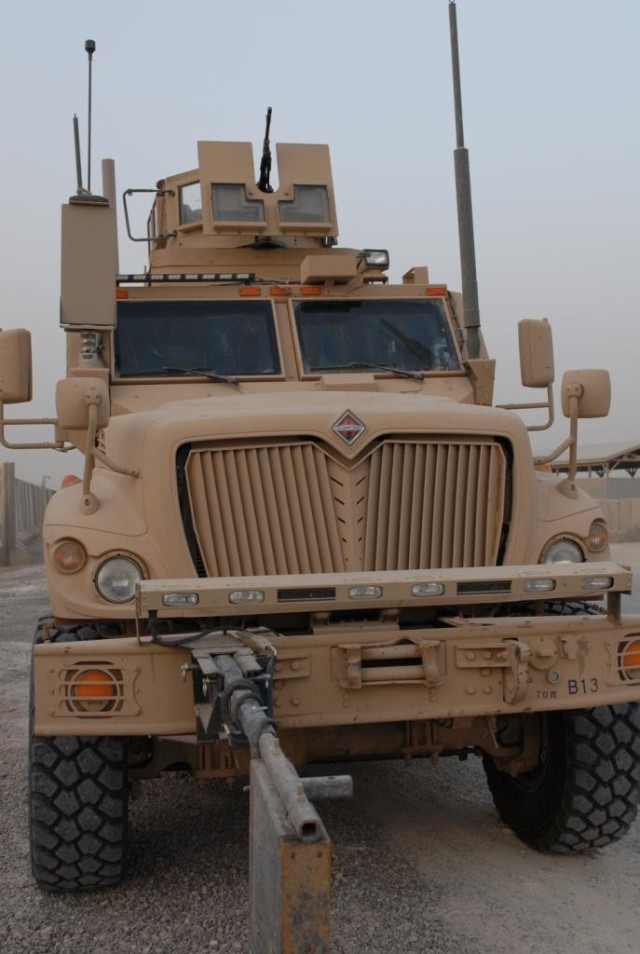
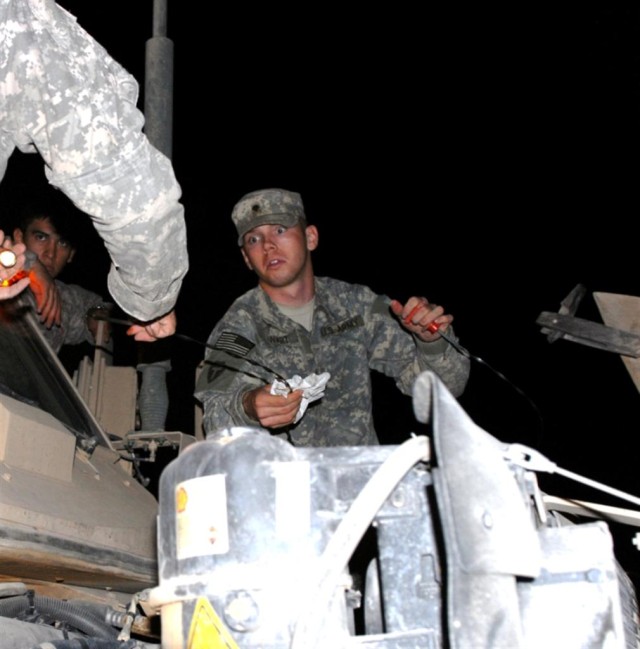
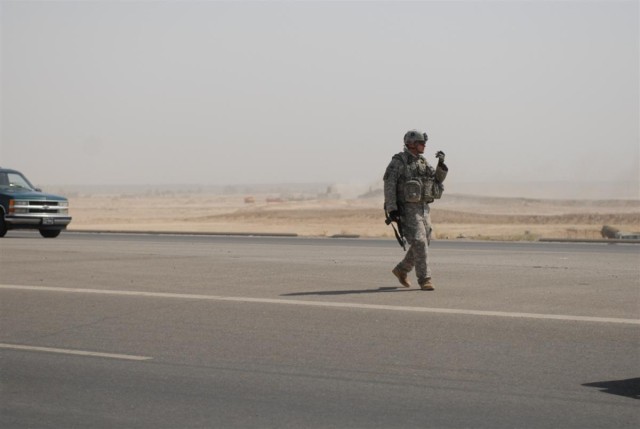
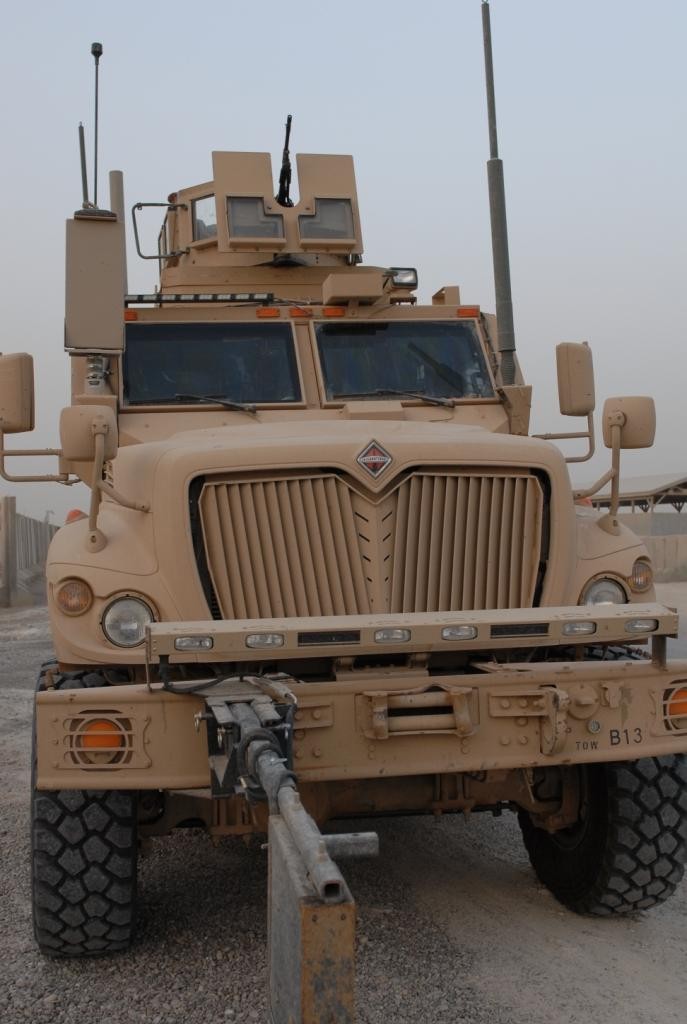
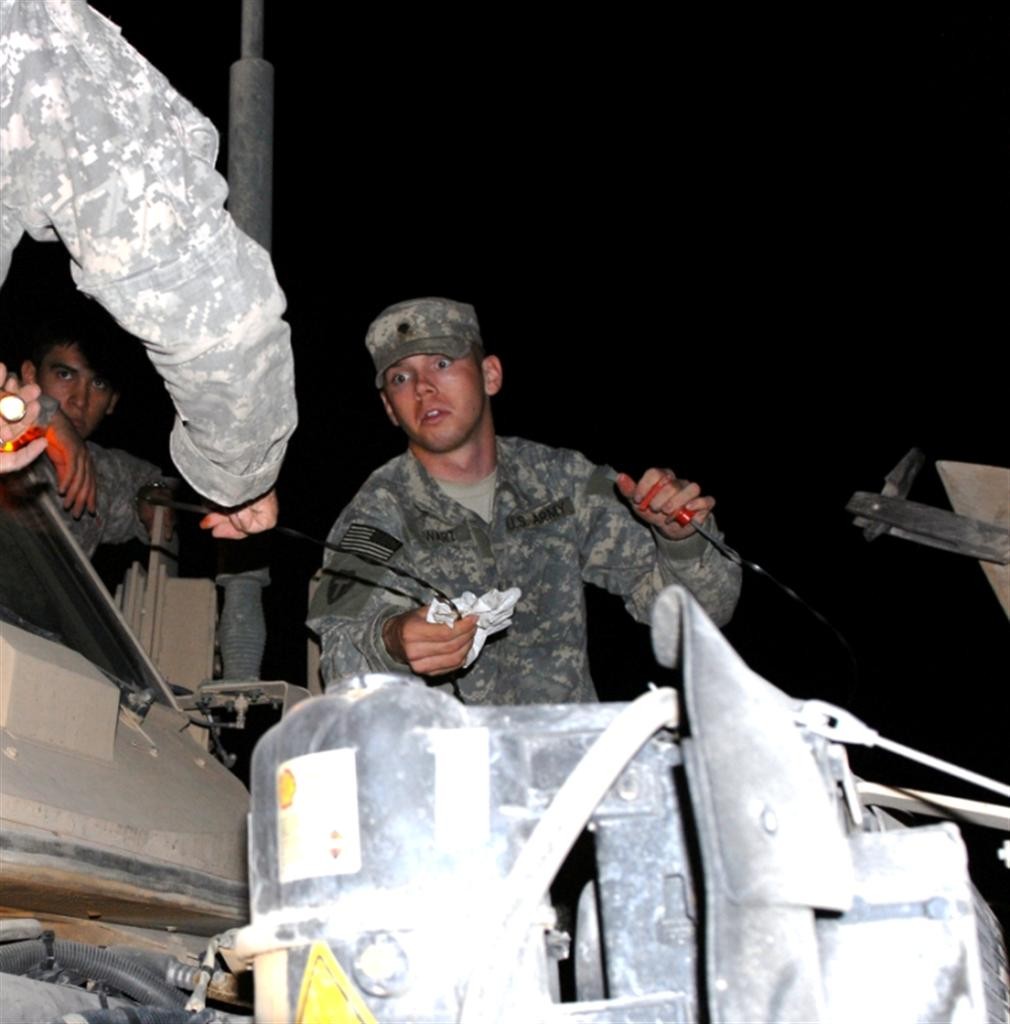
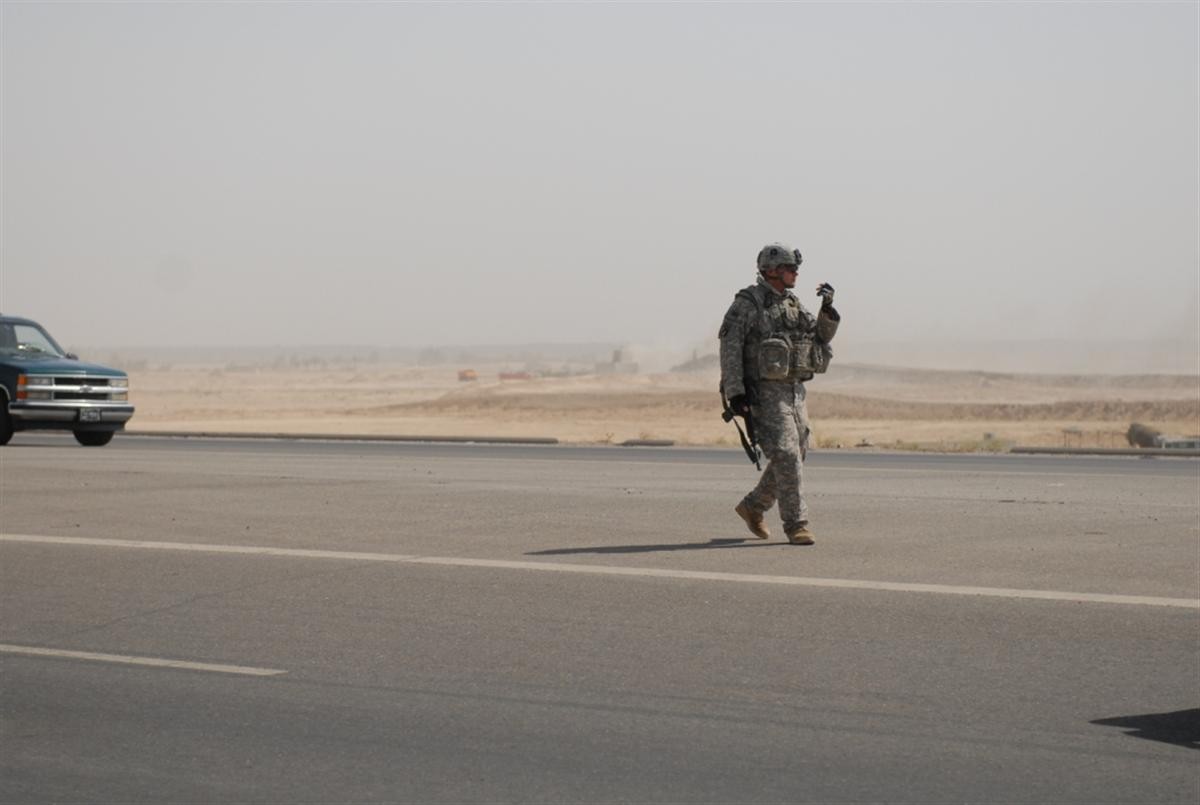
Social Sharing